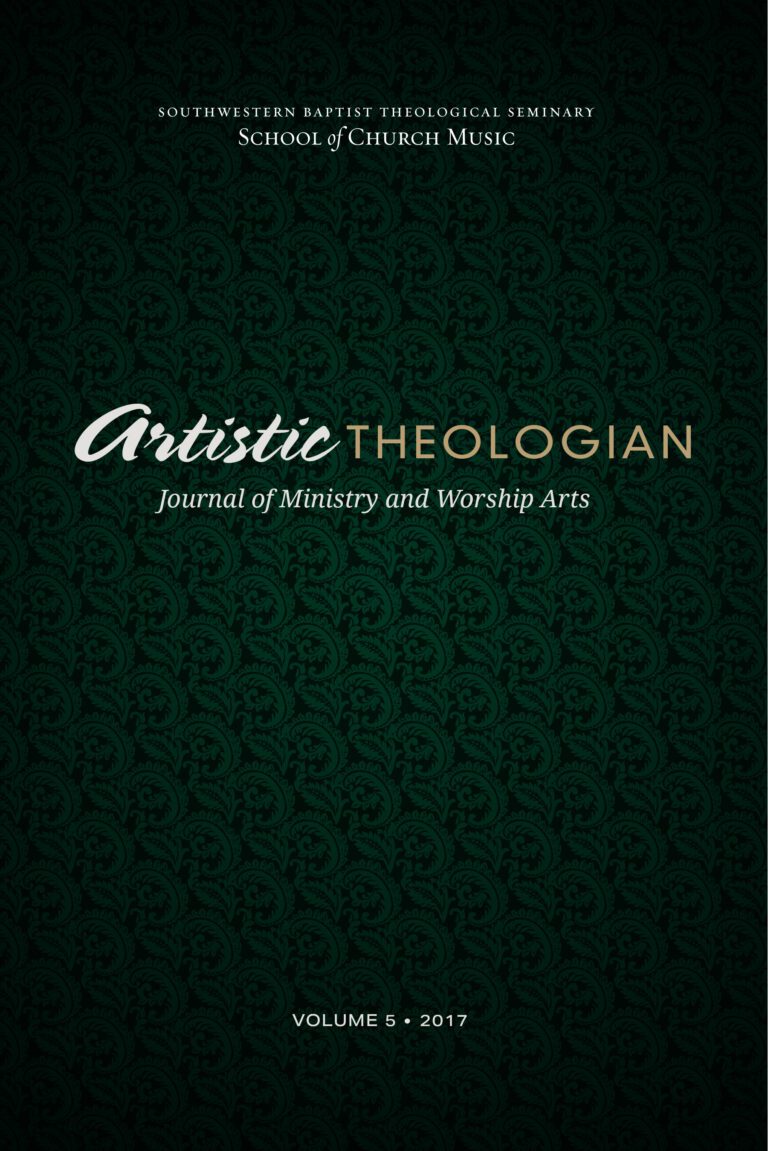
Forming Disciples through Corporate Worship
Artistic Theologian
Volume 5, Summer 2017
Editor-in-Chief: Scott Aniol
Many Christians today consider corporate worship as simply a Christian’s expression of authentic devotion toward God. Yet corporate worship is not merely expressive, it is profoundly formative. How a church worships week in and week out forms the people—it molds their beliefs, values, affections, and ultimately their behavior.
The recognition that corporate worship is powerfully formative is built upon several key ideas about which every leader of corporate worship should give careful consideration: First, fulfilling the Great Commission (Matt 28:19–20) requires that churches do more than just impart theological knowledge since being a disciple of Jesus Christ is learning “to observe all that [Christ has] commanded.” Discipleship is a set of Christ-like behaviors that must be transmitted and nurtured.
Second, we do not behave primarily based upon intellectual information, but rather based on the inclinations of our hearts. Proverbs 4:23 admonishes, “Keep your heart with all vigilance, for from it flow the springs of life.” Everything we do comes ultimately from what we love and how we love it. Thus, making disciples must involve shaping hearts.
Third, shaping the heart’s inclinations involves disciplining what otherwise might be disordered. C. S. Lewis described right affections as “emotions organized by trained habits into stable sentiments.”[1] Christian discipleship necessarily involves helping believers cultivate spiritual disciplines and habits that progressively shape their minds, hearts, and behaviors into the image of Christ.
This is where corporate worship is so significant. It is primarily through a church’s liturgies—that is, its habitual corporate worship practices—that a church shapes the behavior of a people. Through practices that are regulated by God’s Word and art forms that embody right beliefs, values, and affections, corporate worship helps to discipline and train a Christian’s life.
This is why what is important about a corporate worship service is not only what is said from the pulpit or the lyrics of the songs we sing, as critically important as those are. Rather, since the hearts of Christian disciples are shaped mostly through repeated practice, we must also carefully evaluate how the art forms we use in corporate worship and the structure of the service itself are forming the inclinations and values of the people in our churches as they worship each week. Individual art forms—poetry, music, architecture, and rhetoric—each embody inarticulable aspects of Christian piety that inculcate those values through their use, and the overall shape of the service itself, especially those parts that repeat every week, both express and impact beliefs and values. Thus, how people worship weekly both reveals and forms their beliefs and values. As Prosper of Aquitaine observed, Lex orandi, lex credenda—“the law of prayer, the law of belief.” Corporate worship involves practices that occur in every service—they are habits that are forming the inclinations, and therefore behaviors, of worshipers, whether we recognize it or not.
Each of the articles in this volume of Artistic Theologian relates in some way to the critically important interplay between beliefs, values, and worldview on the one hand, and individual art forms or overall liturgies on the other. First, David Toledo examines 1 Corinthians 14 to discern principles that will help navigate the often perplexing tension between form and freedom in planning corporate worship, making certain that our services are conducted “decently and in order.” Shawn Eaton explores the relationship between Enlightenment philosophy and Haydn’s oratorio, Creation, revealing an essential connection between the two. Through a series of first-hand accounts, Will Bishop uncovers how the cultural climate of Southern Baptist youth in the 1960s influenced the publication of the first youth musical, Good News, and how that musical, in turn, has impacted music in worship to this day. Finally, Jacob Sensenig discusses the nature of repetition in worship, both on the large scale of corporate liturgy and on the small scale of individual art forms.
We hope that each of these articles will remind you of the formative nature of Christian worship and music, and we welcome both article and book review submissions for our next volume, scheduled for publication in April of 2018. The deadline for submissions is October 1, 2017.
[1] C. S Lewis, The Abolition of Man (New York: HarperOne, 2001), 18.





